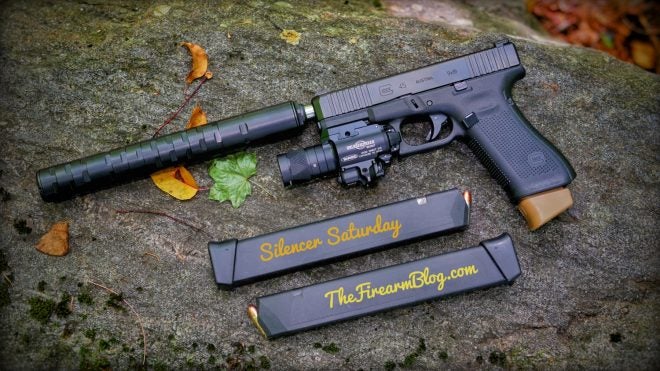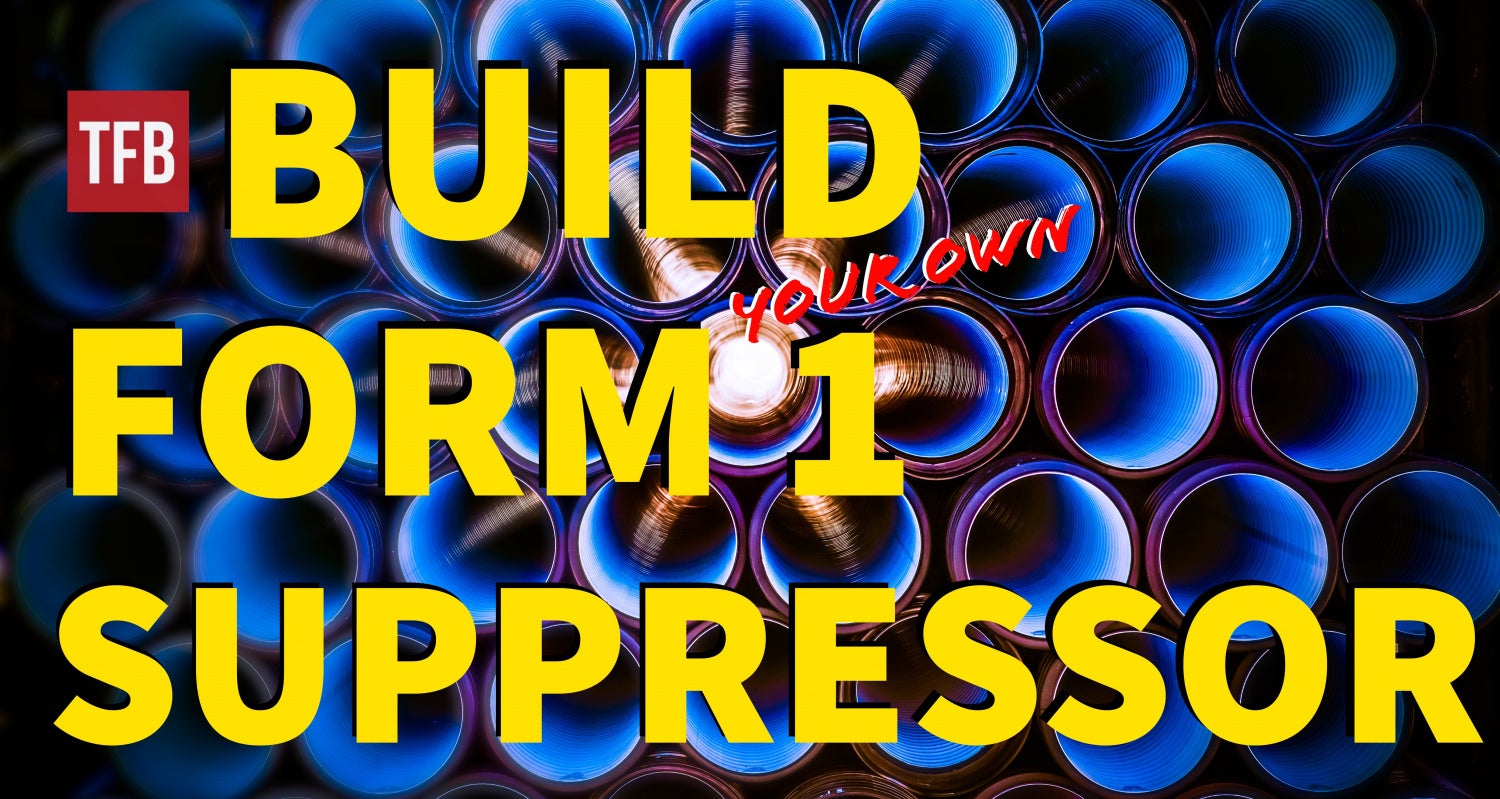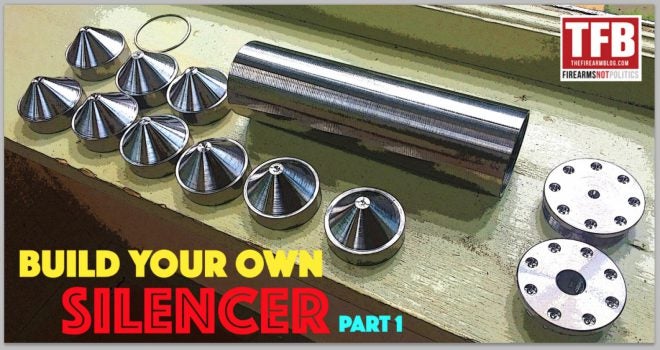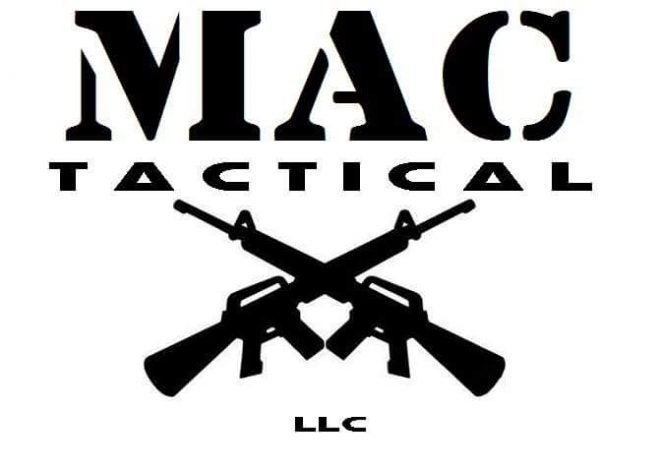Welcome back decibel chasers, thank you for joining us for another episode of TFB’s Silencer Saturday, where the suppressor industry can be as strange as a bad acid trip on Halloween. I had grand plans of metering and reporting results on not one but two Delta P Design Brevis II 3D printed silencers, but since I am away from home base, it will have to wait until next week. Instead I’d like to pick up a discussion we started more than two years ago: building your own silencer part two.
ALERT: New Series For 2020 – Build Your Own Form 1 Suppressor
https://www.thefirearmblog.com/blog/2020/04/18/form-1-suppressor/
SILENCER SATURDAY #39: Build Your Own Silencer Part 2?
In Part 1 of the Build Your Own Silencer series, we discussed the administrative aspects, logistical considerations and the basic mechanics of the legal construction of a gun muffler. Subsequent parts of the series was going to dive in to the purchase of parts, designs and the making of silencers. I say was because, even two years later, Part Two and Three have not yet come to fruition. And with the popularity of the first part (one of TFB’s most visited pages of all time) I get weekly emails asking for a link to the next steps of being a Form 1 maker. So where’s the second part?
The U.S. laws surrounding the manufacturing (in this case making), possession, control and repairing of National Firearms Act (NFA) controlled items, especially silencers, is a confusing mess of archaic rules that seem purpose-built to get law abiding gun owners in trouble. In what world is the possession of a bent freeze plug with a hole considered a silencer? Because, as our laws and regulations read, silencer parts are actually silencers, so the making/manufacturing of parts by unlicensed parties is a taxable event.
Going a step further, the reason you don’t see 80% silencer kits available and (specifically) advertised for sale is that the mere fact of referring to materials that will be made into a silencer and taking knowing step to buy them for that purpose, by an unlicensed individual, is a taxable event. Which is why many of the “solvent trap” kits are not advertised as “silencer kits”. If you buy those parts to use as an actual solvent trap and later decide to build a silencer, you must pay your $200 making tax and have an approved Form 1 before you make any overt act that would be considered an unregistered part.
It is pretty messed up, right? Forget the fact that actual silencers are tubes and can’t shoot a round on their own, but a cone shaped fender washer in the right (wrong) context could be considered a silencer in of itself. Going a step further, if you damage a silencer that you yourself have legally built, you must either send it to a licensed manufacturer or pay an additional $200 tax and wait for another Form 1 approval.
Which brings me to the mystery of Build Your Own Silencer Part 2. As I had begun to craft the guide, I realized that by stating the intent of the build process as being to make a silencer and then point our readership in the direction of where to buy these parts, I may have created a situation that could get people in trouble. Even with specific warnings to have an approved Form 1 and NFA stamp in hand, purchasing parts from vendors for the specific purpose of building a silencer could be problematic. Chances are, nothing would ever happen and many custom silencers would be built legally around the country.
So, I think I have a plan to move forward with the next phase of the build series. It may involve the use of words like ‘theoretically’, ‘hypothetically’ and ‘possibility’ and constant reminders that all required applications, approvals, stamps and taxes must be paid for and received prior to any materials being purchased or work being started. But, I wholeheartedly believe that to truly appreciate the world of suppressors, shooters should be able to experience the build process on their own.
Let’s take a look at the outline for the upcoming continuation of the series.
Build Your Own Silencer – Part 2:
- Types/Designs
- Calibers
- ATF Form 5320.1 (Form 1)
- Paper vs EFile
- Resources
- Part Suppliers
- While You Wait
- Homework
Build Your Own Silencer – Part 3:
- Approval
- Building/Machining
- Working With Metal
- Bore Diameter and Concentricity
- Baffle Clipping/Mouse Holes
- Mounting/Testing
- Coating/Painting
- Final Thoughts
As always your input is welcome. Thanks for reading and see you next week.

The new Glock G45 gets the Dead Air Odessa 9 treatment by way of KKM barrels and some quality ammunition from Rainier Arms. This combination is very quiet and we plan on metering the Odessa with every possible length using the Rainier 9mm 147gr competition rounds. Stay tuned.
TFB’s Silencer Saturday is brought to you by Sig Sauer

Sig SRDTi / Sig SRD762Ti-QD Overview
Published on Oct 20, 2015
Sig Sauer makes a good impression with their new 7.62 suppressors. Although they may look a bit different than you are used to, they sound wonderful.
RMS2 Is Coming Soon
Published on Aug 28, 2018
We’re just a couple guys who are making suppressors fun again! Keep checking back as we will be launching our swag and suppressors soon! Follow us as we change the suppressor game.
Silencer Meltdown! RMS2 Suppressors Hopaii
Yes, you read right. In this video we attempt to kill a can and we have no idea what might happen. This particular high performance, 5.56 caliber 718 Inconel/321 Stainless Steel hybrid silencer is the debut model from a new local company, RMS2 Suppressors, using old school and proven Omega baffle technology developed by Joe Gaddini of SWR fame. Running any suppressor on a rifle will keep more of the hot gases in the operating system for longer and increase the stress on the barrel, gas block, gas tube and bolt carrier group. We are running a standard 16″ DI barrel AR-15 and M855 NATO spec ball ammo for this test. Stay tuned, much more on the way.
 Your Privacy Choices
Your Privacy Choices



